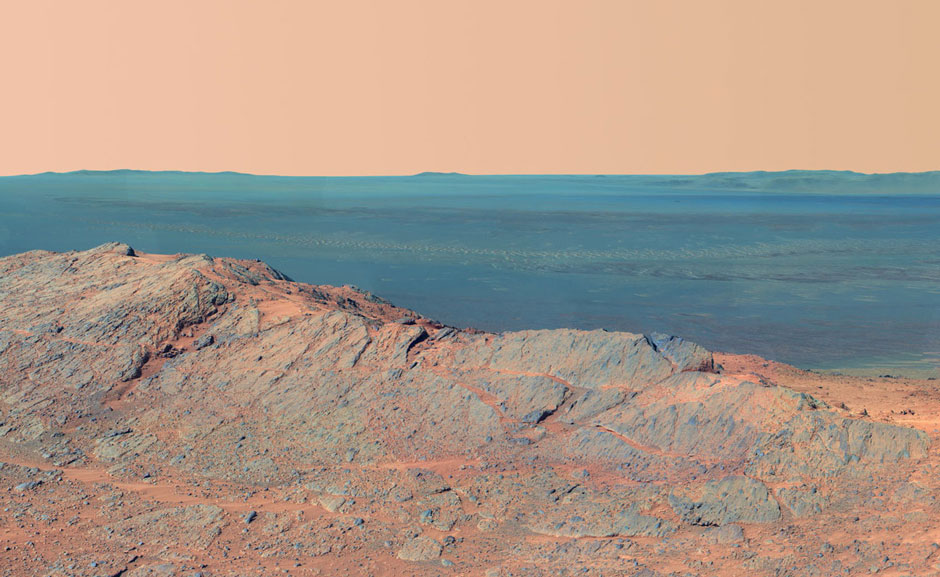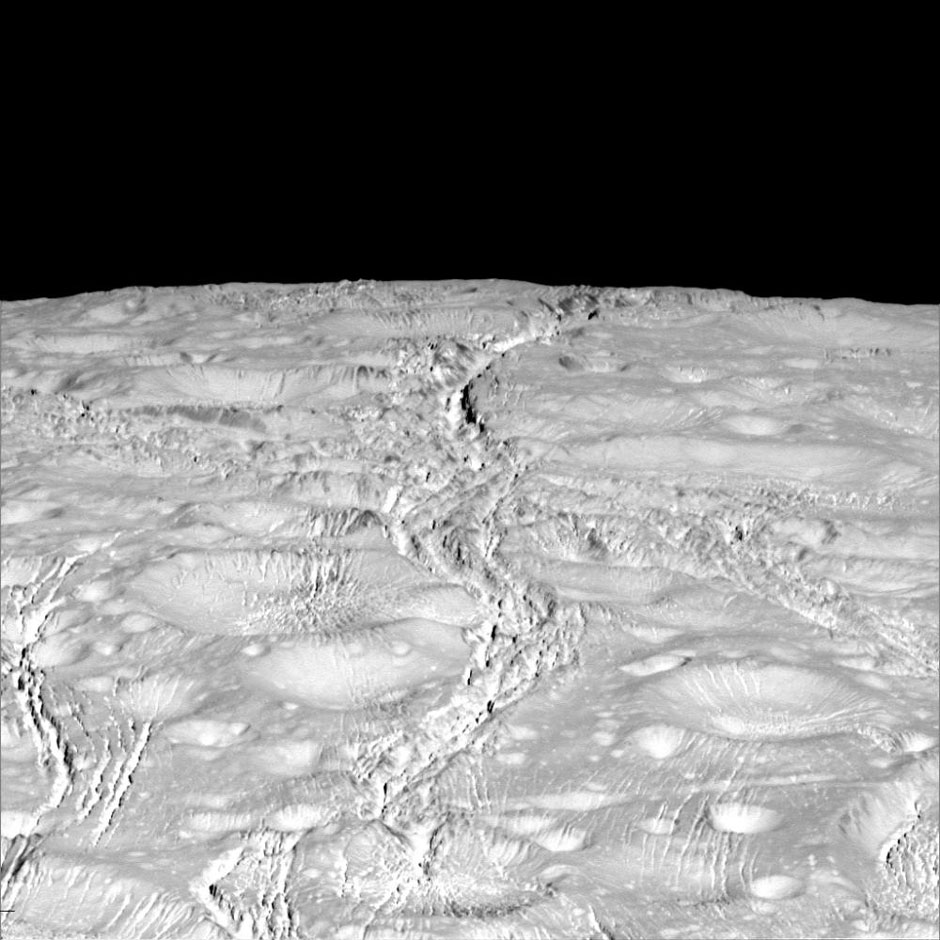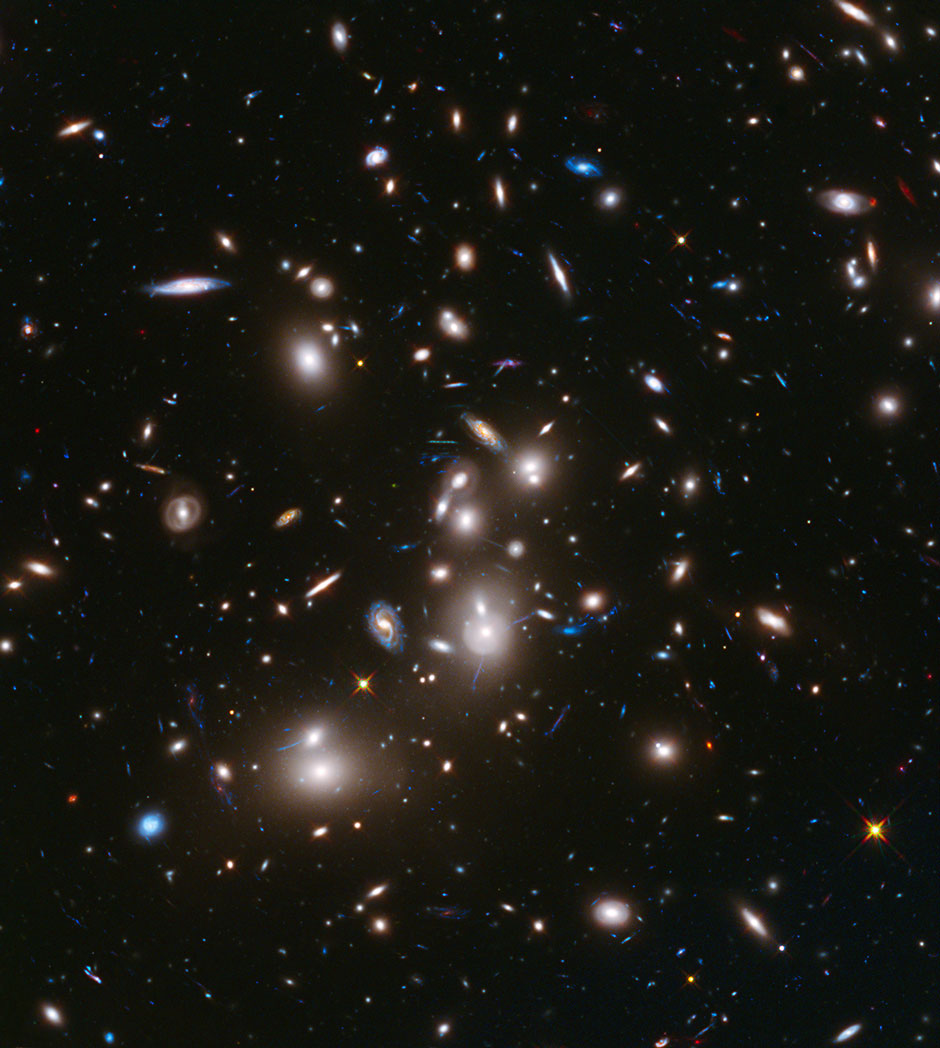Several exciting discoveries in the cosmos, including close-up photos of Pluto by the New Horizons space probe and new evidence for water flows on Mars, are helping us reframe many age-old questions. Is there life elsewhere? Are we alone? These questions have finally leaped from popular speculation to the realm of scientific scrutiny.
The recent revelation about Mars makes this a very promising subject. According to our current understanding of what constitutes life, even the most primitive life-forms require water and organic molecules for generation. So the existence of water on the Red Planet significantly raises the prospects for life on its surface and it seems likely that this search will take highest priority in future planetary space missions. Building on the success of the Mars rover Curiosity, NASA plans to launch a new robotic science rover in 2020, taking advantage of a favorable orbital alignment between Mars and the Earth that will require less power to get there and land. With longer-range roving capabilities and a suite of seven scientific instruments including imagers and mass spectrometers, the rover will be able to gather and analyze rock and soil samples. This will greatly enhance our ability to decipher the composition of Mars.
The water discovery has also renewed enthusiasm for sending spacecraft deeper into the solar system to search for water and other signs of life, particularly on the moons of Jupiter and Saturn. Already in 2005, the Huygens probe, part of the Cassini mission, successfully landed on Titan, one of Saturn’s numerous moons—the most distant landing of a craft launched from earth—and sent back remarkable images from the moon’s surface. It uncovered swirling oceans of methane, a nitrogen-rich atmosphere, and even a sub-surface ocean—all elements that we deem essential for harboring primitive life forms.
Another of Saturn’s moons that is a candidate for signs of life is Enceladus, which the Cassini spacecraft has been orbiting since 2004. Once again, there appears to be water bubbling up from the icy surface, venting through cracks, revealing the presence of organic compounds in the underground ocean. NASA and the European Space Agency have made tentative plans for a mission titled Titan Saturn System Mission, that is designed to follow up on Cassini’s current finds on Titan and Enceladus.
Central to all of these explorations of course, is the debate about how we define life. We might need to go well beyond our anthropomorphic notion that life must evolve as it has on our planet, from primitive bacteria to multi-cellular organisms to more complex creatures. As the evolutionary biologist Stephen Jay Gould wrote: “Homo sapiens [are] a tiny twig on an improbable branch of a contingent limb on a fortunate tree.”
Indeed, rapid advances in telescope technology are meanwhile showing just how contingent our own position in the universe is. As we explore close to home and search for exoplanets—planets that orbit other stars—near our own solar system, we are also using recent scientific discoveries and technological advances to access the remote universe. To peer into the farthest reaches of the cosmos, we are currently exploiting nature’s own telescopes—galaxy clusters that, because of their exceptionally large masses, have special light-reflecting properties. They are held together by the gravity of dark matter, which, by bending light, brings into view even more distant galaxies that would otherwise be inaccessible, just as a lens magnifies the small print in a newspaper. Because these objects are so distant, we are seeing them as they appeared billions of years ago, giving us new clues about the early universe. But for the galaxy clusters to act as a lens requires serendipitous alignment of background galaxies, and we cannot swing these natural telescopes to point to other cosmic corners for sharper viewing. (Some of these clusters, containing up to a thousand galaxies, have been photographed recently by the Hubble Space Telescope as part of the Frontier Fields Initiative.)
To enhance our view from the Earth, we are now building larger telescopes to catch as much of the light from the early universe as possible. These new designs have lenses, or collecting areas, that are far bigger than any previous ones; some are up to thirty meters in diameter. At the moment there are three competing projects that share the goal to probe the earliest stars and black holes in the universe and study exoplanets in detail: the European Extremely Large Telescope (EELT), the biggest light collector to date, is planned to be built in Cerro Paranal, Chile; the Giant Magellan Telescope (GMT), and the Thirty Meter Telescope (TMT), are both international collaborations led by the United States. All are expected to begin operating in 2024 or 2025. Outfitted with a range of instruments that span the optical and infrared wavelengths, these telescopes should give new insight into how the first galaxies and black holes were formed as well as into the early development of planets.
Advertisement
As these plans unfold, there is another project, the Event Horizon Telescope, that will help us peer closer into the center of our own galaxy. Astronomers have long inferred that there is a black hole lurking at the heart of the Milky Way, but have only been able to speculate about its nature and properties from the effects its gravity exerts on stars that stray closeby. Our current understanding of galaxy formation suggests that almost every galaxy likely hosts a central black hole, the assembly of which is intimately tied to the build-up of stars in the galaxy. The universe’s most enigmatic objects, black holes cannot be directly viewed. Because of their extreme gravity, however, we can become aware of their presence by the influence they exert on nearby stars. In addition to affecting the motions of stars, black holes do something much more dramatic. They generate a deep divot in the fabric of space-time, altering the paths of light rays around them as well as the flow of time. That is, as one approaches a black hole, clocks slow down.
As a result, light from astronomical objects near the black hole at the center of the Milky Way will be reflected by the black hole and cast a special kind of shadow around its edge—the event horizon, the point of no return beyond which not even light can escape. This peculiar shadow can be captured by radio wave images ,which is what the designers of the Event Horizon Telescope hope to do. Combining the power of several radio telescopes scattered around the globe in New Mexico, Chile, and Germany to act as one giant collecting dish, the Event Horizon Telescope is intended to map this shadow and verify properties of the black hole. This project is ongoing and we can expect exciting new results in the next few years.
That would map the black hole closest to us—but what of the distant ones that seem to litter the early universe? The upcoming launch of the James Webb Space Telescope (JWST) in 2018—the successor to the Hubble Space Telescope—should produce many new discoveries. The JWST will deploy a primary mirror that is twenty-one feet in diameter, which is about seven times larger than Hubble’s. It will also have a much larger field of view, fifteen times that of the NICMOS camera mounted on Hubble. Technological advances in detector sensitivity will further provide significantly improved spatial resolution, which should facilitate the identification of many early black holes, as well as, potentially, their seeds—the concentrations of matter from which they arose—that perhaps formed even before the first stars lit up the universe.
As always, we can only speculate on how these new instruments will change our view of the cosmos near and far. One thing we can be sure of—much of our current understanding of the universe will be transformed. The discovery of even the most primitive life forms on another planet may force us to revise our assumptions about earth and how life began here. Scientifically this might well lead to changes in what are currently deemed as conditions conducive to habitability. Not only might we have to stop thinking of ourselves as exceptional; we will also have to concede that we know far less than we think we do about the universe.
While that might further cause us to feel adrift and disoriented in this peculiar universe of ours, maybe we will detect evidence of other universes beyond our own, lending us the ultimate cosmic perspective: being one among many.





